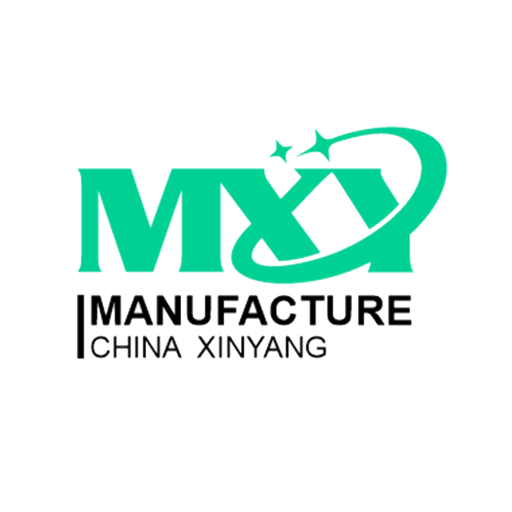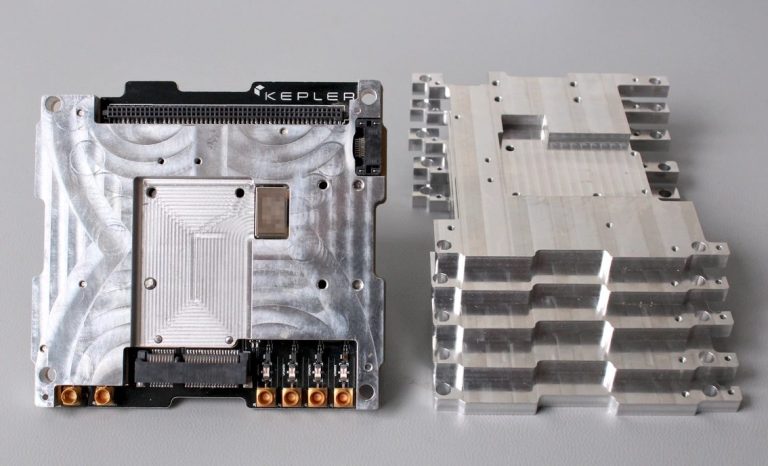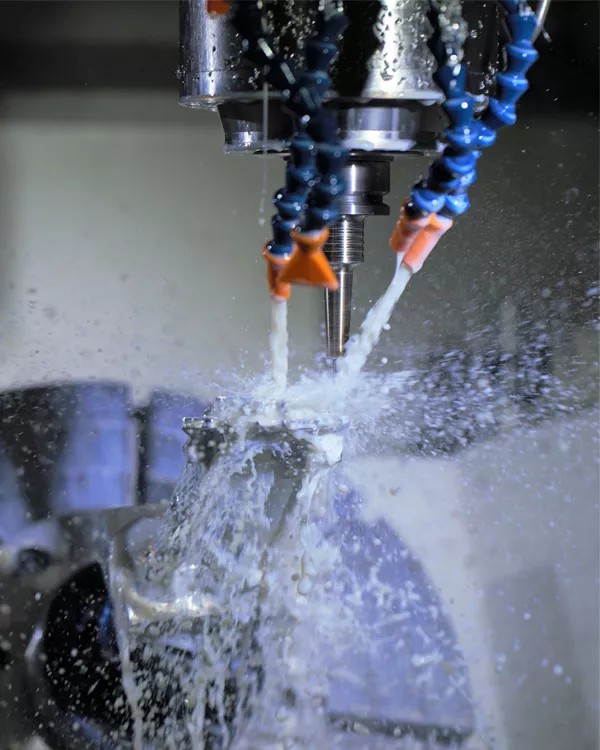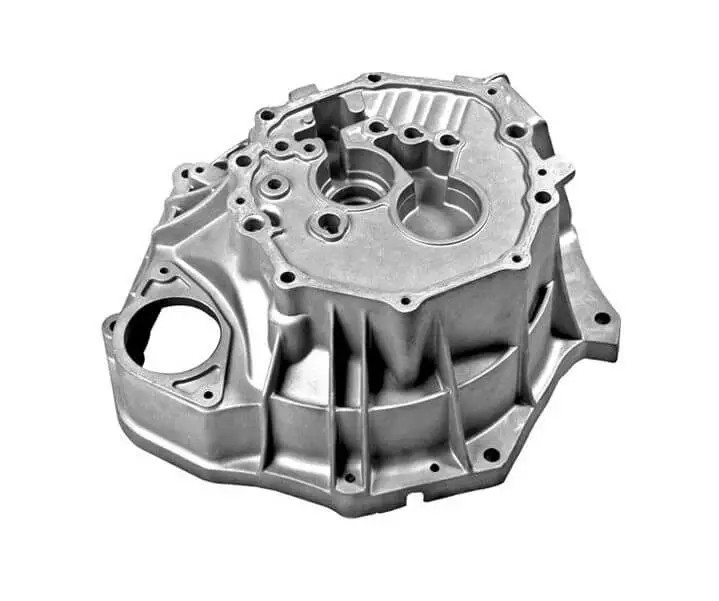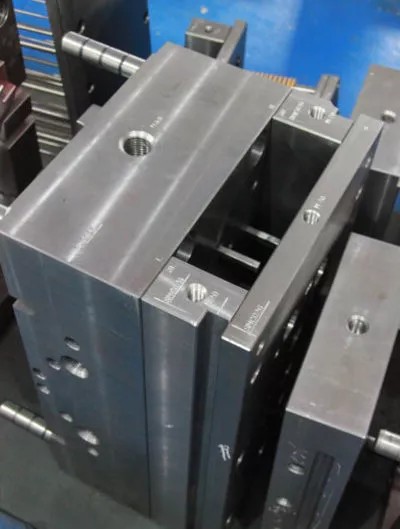
Acrylic (PMMA) is a highly desirable material due to its strength, toughness, and transparency. But relying on conventional machining processes to cut acrylic can be a complicated procedure: the material is highly fragile and any excess force can cause unwanted breakages.
CNC machining, however, offers a reliable way to fabricate acrylic parts safely, with a high degree of accuracy and minimal waste of acrylic material. CNC machining results in very few errors, making it possible to create high-quality acrylic parts and prototypes such as headlamps, casings, jewelry, and more.
Table of Contents
Is Acrylic Easy to Machine?
Acrylic, with its excellent clarity and adaptability, poses an interesting subject for CNC machining. Known scientifically as polymethyl methacrylate (PMMA), acrylic offers a unique combination of properties that make it both appealing and challenging to machine.
Its susceptibility to heat and proneness to scratches necessitate a meticulous approach to machining, yet its plasticity and resilience allow for a wide range of applications, from intricate models to durable components.
Material Properties of Acrylic (PMMA) for CNC Machining
Now that we know the advantages of Acrylic for CNC machining operations and projects, let’s get into more specific data on its material, physical and chemical properties:
- Density: 1.18 g/cm³ – This influences the weight of the finished product and affects machining parameters like feed rate and speed.
- Tensile Strength: 70 MPa (10,153 psi) – A measure of the maximum stress acrylic can withstand while being stretched or pulled before breaking.
- Flexural Strength: 115 MPa (16,687 psi) – Indicates the amount of bending stress acrylic can endure without deformation.
- Compressive Strength: Around 90 MPa (13,053 psi) – The capacity of acrylic to resist squeezing forces.
- Modulus of Elasticity: 3,000 MPa (435,113 psi) – This elastic modulus indicates the stiffness of acrylic, impacting its flexibility under load.
- Impact Resistance: Notched Izod impact test results are around 0.35-0.40 KJ/m² – Reflects acrylic’s ability to withstand sudden impacts, crucial for applications where durability is a concern.
- Thermal Expansion Coefficient: 50-60 x 10⁻⁶ K⁻¹ – Acrylic expands with temperature increases, a vital consideration for parts intended for environments with temperature fluctuations.
- Heat Deflection Temperature: 95°C (203°F) at 0.46 MPa (66.4 psi) – The temperature at which acrylic deforms under a specific load, important for applications near heat sources.
- Light Transmission: Up to 92% for clear acrylic – Essential for applications requiring optical clarity.
- Refractive Index: Approximately 1.49 – Influences the passage of light through acrylic, significant for optical and lens applications.
- Water Absorption Rate: 0.3% – Acrylic can absorb minimal moisture, affecting its dimensions and properties in humid conditions.
- Chemical Resistance: Acrylic is resistant to dilute acids and alkalis but can be damaged by strong solvents and cleaners – Knowledge of chemical resistance ensures the longevity of acrylic parts in various environments.
- UV Resistance: Acrylic inherently resists UV light degradation, making it suitable for outdoor use without significant yellowing or weakening over time.
- Hardness: Rockwell M scale 95 – Determines the surface wear and scratch resistance of acrylic materials.
Understanding these properties of acrylic is crucial for CNC machining, as they directly affect the choice of cutting tools, machining parameters, and the suitability of acrylic for specific applications.
What are the steps to CNC machining Acrylic?
CNC machining acrylic is a process that transforms a simple acrylic sheet into a complex, precision part or product.
The CNC (Computer Numerical Control) machining process for acrylic involves several key steps, each important to achieving the desired outcome with the highest quality.
Here’s an overview of the stages involved:
- Design and CAD Modeling: Initially, the concept is visualized and then designed using CAD (Computer-Aided Design) software. This digital model is the blueprint for the machining process.
- Selecting the Acrylic Material: There’s a choice between cast and extruded acrylic, each with unique properties that affect the machining process and the final product.
- Preparing the CNC Machine: This involves setting up the machine, including calibration and ensuring all components are functioning correctly.
- Tool Selection: Selecting the right cutting tools is crucial to prevent damage to the acrylic and achieve a high-quality finish.
- Securing the Acrylic: The material must be clamped securely to prevent movement during machining, which could lead to inaccuracies.
- Setting Machining Parameters: Parameters such as spindle speed, feed rate, and depth of cut must be adjusted specifically for acrylic to ensure optimal machining conditions.
- CAM Programming: The CAD model is translated into G-code, the machine language that controls the CNC machine’s movements.
- Running a Test Cut (Optional): A preliminary test cut can help identify any potential issues before the final machining process begins.
- Machining the Part: The machine follows the programmed path to cut the acrylic material into the desired shape and size.
What are the different CNC machining operations suitable for acrylic?
CNC machining operations tailored for acrylic leverage the material’s unique properties, such as its clarity, UV stability, and impact resistance. These operations are designed to maximize the potential of acrylic in various applications, ensuring that the end products meet the required precision and quality standards.
Acrylic’s versatility makes it an ideal candidate for a range of CNC machining processes, each chosen based on the specific needs of the project.
CNC Milling Acrylic
CNC milling is a highly adaptable operation suitable for acrylic machining, capable of producing intricate details and smooth finishes. This process involves the removal of acrylic material using a rotating cutting tool, allowing for the creation of complex three-dimensional shapes.
- Technical Suitability for Acrylic: The non-contact nature of CNC milling minimizes the risk of cracking or melting the acrylic, which could occur with less precise machining methods. The control over the milling machine’s speed, feed rate, and depth of cut allows for adjustments to be made specifically for the acrylic’s properties, ensuring a high-quality surface finish and reducing the need for post-processing.
- Applications: From prototype development to the production of finished parts, CNC milling serves a wide range of applications in industries such as automotive, aerospace, and medical devices. This versatility is particularly beneficial for creating components with tight tolerances or intricate designs, such as lenses for car lights, transparent covers for medical devices, and decorative items.
CNC Turning Acrylic
CNC turning of acrylic involves the use of a lathe where the acrylic material is rotated while a cutting tool is fed into it, producing cylindrical parts with precise dimensions and a smooth finish.
- Technical Suitability for Acrylic: This operation is particularly effective for acrylic due to its ability to produce rounded components with high dimensional accuracy. The controlled environment of CNC turning minimizes material stress, preserving the acrylic’s optical properties and preventing warping or distortion.
- Applications: CNC turning is commonly used to manufacture acrylic parts that require symmetrical shapes, such as tubes, rods, and circular components used in lighting fixtures, architectural elements, and consumer electronics. The process ensures uniformity and consistency, essential for components that must fit together precisely in assembly.
CNC Drilling Acrylic
CNC drilling is a precise method to create holes in acrylic materials, ranging from simple, straight-through holes to more complex, angled entrances and exits.
- Technical Suitability for Acrylic: The precision of CNC drilling allows for the creation of clean, burr-free holes without causing cracks or other damages to the acrylic. By adjusting drilling parameters such as speed and feed rate, it’s possible to achieve optimal results while maintaining the integrity of the acrylic material.
- Applications: This operation is crucial for parts that require mounting or assembly, including displays, fixtures, and enclosures in various industries. The ability to drill holes with high precision is vital for the assembly of complex acrylic structures, ensuring that components fit perfectly without additional modifications.
CNC Engraving Acrylic
CNC engraving on acrylic offers the ability to etch detailed graphics, text, and patterns into the surface of the material, adding aesthetic or functional features to the part.
- Technical Suitability for Acrylic: Engraving on acrylic with CNC technology provides unparalleled control over depth and detail, allowing for intricate designs that are not feasible with manual processes. The process is gentle enough to avoid cracking the acrylic while being powerful enough to produce clear, visible markings.
- Applications: CNC engraved acrylic is widely used in signage, award plaques, and decorative panels, where precision and clarity are paramount. The technique also finds applications in industrial labeling and branding, where durability and legibility of the engraved marks are critical.
CNC Cutting Acrylic
CNC cutting provides a precise and efficient method for shaping acrylic sheets into desired dimensions and forms. This process involves using a CNC router or mill to cut through the acrylic material, following a predefined path or design.
- Technical Description and Suitability: The precision of CNC cutting allows for intricate designs and sharp, clean edges on acrylic parts. The non-contact nature of the cutting tools minimizes the risk of physical stress, reducing the likelihood of cracking or chipping the material. This operation is particularly suitable for acrylic due to its ability to produce smooth surfaces that require minimal post-processing. Applications range from creating complex shapes for architectural models to detailed parts for electronic devices.
CNC Laser Cutting Acrylic
CNC laser cutting stands out for its ability to deliver high precision and detail when working with acrylic materials. It uses a focused laser beam to melt, burn, or vaporize the acrylic, allowing for intricate cuts and engravings.
- Technical Description and Suitability: Laser cutting is ideal for acrylic because of its clean, flame-polished edges, which eliminate the need for additional finishing processes. The method is highly accurate, enabling the creation of complex designs without physical contact with the material, thereby preventing mechanical stress and ensuring the acrylic’s integrity. It’s widely used in signage, decorative items, and components where precision and aesthetic quality are paramount.
CNC Laser Engraving Acrylic
CNC laser engraving offers a unique capability to etch detailed designs, text, or images onto the surface of acrylic materials. Unlike cutting, engraving focuses on modifying the surface appearance rather than cutting through the material.
- Technical Description and Suitability: Laser engraving on acrylic produces a frosted, white appearance in the engraved areas, offering excellent contrast against the clear material. This process is suitable for acrylic due to its precision and the ability to achieve high detail without damaging the material’s surface. Applications include branding, decorative etching, and creating tactile interfaces on acrylic components.
What are different Surface Finishes for CNC Machined Acrylic?
After CNC machining, acrylic parts can undergo various surface finishing techniques to enhance their appearance, durability, or function. This overview introduces popular finishes that add value to CNC machined acrylic components.
- Flame Polishing: This finishing method involves exposing the edges of acrylic parts to a flame to melt the surface slightly, resulting in a glossy, transparent finish. Flame polishing is effective for smoothing out machined edges, improving the aesthetic appeal of the part. It’s suitable for applications where a high-gloss finish is desired, such as in retail displays or decorative items.
- Buffing and Polishing: Mechanical buffing and polishing processes use abrasive compounds and soft cloths to reduce surface roughness and achieve a mirror-like finish on acrylic parts. This method is essential for applications requiring maximum optical clarity and smoothness, including lenses, covers, and high-end decorative pieces.
- Sanding – Sanding is a mechanical process that removes minor imperfections and smoothens the surface of acrylic parts. This method is critical for preparing the material for further finishing processes or for achieving a specific texture.Sanding is particularly effective for acrylic because it can gradually refine the surface, allowing for control over the smoothness without removing excessive material. It’s often the first step in a multi-stage finishing process.
- Vapor Polishing – Vapor polishing is a technique that uses a chemical vapor to melt the surface of the acrylic slightly, resulting in a glass-like, transparent finish. This method is highly effective for improving the optical clarity of machined edges and surfaces. Suitable for acrylic due to its ability to achieve a clear, polished surface without mechanical contact. The process is particularly beneficial for parts with complex geometries that are difficult to polish manually.
- Chemical Polishing – Chemical polishing involves immersing the acrylic part in a chemical solution that selectively dissolves the surface, smoothing out imperfections. This method provides a uniform finish without the need for physical abrasion. Acrylic responds well to chemical polishing, as the process enhances its natural clarity and gloss. It’s effective for parts that cannot be exposed to the heat of mechanical polishing methods.
- Bead Blasting – Bead blasting employs fine beads propelled at high velocity to gently abrade the surface of the acrylic, resulting in a uniform, textured finish. This method is gentle enough to avoid damaging the acrylic while providing a consistent matte finish that can hide fingerprints and light scratches.
- Painting and Coating – Painting and coating involve applying a layer of paint or protective coating to the surface of the acrylic, offering endless color options and additional surface properties such as enhanced UV resistance or hardness. Acrylic is an excellent candidate for painting and coating, as it adheres well to various types of coatings, providing durability and customization in terms of color and finish.
- Laser Engraving – Laser engraving on acrylic creates precise, detailed markings by selectively removing material with a focused laser beam, resulting in a frosted appearance on the engraved areas. Acrylic is highly suitable for laser engraving due to its ability to produce clear, high-contrast markings without affecting the material’s integrity.
- Dip Coating – Dip coating involves immersing the acrylic part in a liquid coating solution, then withdrawing it at a controlled rate, leaving a thin, uniform film on the surface. Acrylic parts benefit from dip coating as it provides a smooth, even coat without brush marks or drips, enhancing the appearance and adding a layer of protection.
What are the Types of Acrylic Suitable for CNC Machining?
Not all acrylic types behave the same way. The selection of the right type of acrylic is crucial for achieving the desired outcome in terms of quality, durability, and aesthetics. Let’s explore the types of acrylic suitable for CNC machining and their distinct characteristics.
Cast Acrylic
Cast acrylic is manufactured by pouring liquid acrylic into molds, which results in a homogeneous material with excellent optical properties. It is highly regarded for its clarity, making it ideal for applications requiring transparency, such as lenses and windows. Cast acrylic is preferable for CNC machining due to its lower internal stress compared to other types. It machines cleanly, producing a smooth surface that requires minimal post-processing.
- Applications: Used in signage, displays, and light fixtures, where its optical clarity and resistance to UV light and weathering are beneficial.
Extruded Acrylic
Extruded acrylic is made by continuously pushing acrylic mass through a form to create lengths of acrylic sheet. The process results in a material with tighter thickness tolerances and lower cost, but with more internal stress. While it can be more prone to cracking during machining, extruded acrylic can still be used effectively with the proper settings. It’s suitable for projects where tight tolerances are essential.
- Applications: Ideal for framing, shelving, and applications where uniform thickness is critical.
Continuous Cast Acrylic
Continuous cast acrylic strikes a balance between cast and extruded acrylic, offering properties similar to cast acrylic but with the efficiency of an extruded production process. This acrylic type combines the machinability and quality of cast acrylic with the economic benefits of extrusion, making it a versatile option for a wide range of applications.
- Applications: Widely used in industrial applications, including machine guards and noise barriers, where both clarity and durability are required.
Modified Acrylic
Modified acrylic includes additives that enhance certain properties, such as impact resistance or flame retardancy. These modifications expand the application range of acrylic in more demanding environments. The additives can affect the machining process, but generally, modified acrylics can be machined effectively with adjustments to account for the altered properties.
- Applications: Suitable for use in environments where standard acrylic might not perform well, such as in high-impact or fire-sensitive areas.
Acrylic Composites and Laminates
Acrylic composites and laminates consist of layers of acrylic and other materials, such as metals or other plastics, to achieve specific properties not possible with pure acrylic. Machining these materials requires careful planning and tool selection to accommodate the different layers’ properties. The results can offer unique aesthetic and functional benefits.
- Applications: Used in decorative panels, architectural features, and anywhere a combination of materials is needed for design or functional reasons.
Frosted and Textured Acrylic
Frosted and textured acrylic provides a distinctive finish right from the manufacturing process, eliminating the need for extensive post-processing to achieve a matte or textured surface. These acrylic types machine well, though the focus may be more on preserving the texture or finish during the machining process.
- Applications: Perfect for light diffusing applications, signage, and decorative elements where a non-glossy surface is desired.
What are the Advantages of Using Acrylic for CNC Machining?
Acrylic offers distinct advantages that make it a versatile choice across a broad spectrum of industries.
Optical Clarity and UV Stability
One of the hallmark properties of acrylic is its optical clarity. With a refractive index of 1.49, it allows up to 92% of visible light to pass through, outperforming glass and other plastic materials. This level of transparency, combined with excellent UV stability, ensures that acrylic components maintain their clarity without yellowing, even with prolonged exposure to sunlight.
High Strength and Durability
Acrylic exhibits a remarkable balance of strength and durability, characteristics that are often compared favorably to glass but with greater impact resistance. This makes it an ideal candidate for applications requiring a lightweight material that does not compromise on robustness.
Ease of Machining
CNC machining acrylic is straightforward, thanks to the material’s consistency and the absence of grain, allowing for precise and intricate detailing without the risk of splintering or chipping. This ease of machining makes acrylic suitable for complex and detailed projects.
Chemical Resistance
Acrylic demonstrates strong resistance to a wide array of chemicals, making it suitable for environments where exposure to solvents and other chemicals is common. This resistance helps in preserving the integrity and appearance of machined parts over time.
Temperature Resistance
The material’s ability to withstand varying temperatures without deforming or losing clarity is another advantage. Acrylic’s temperature resistance makes it adaptable to both indoor and outdoor applications, broadening its utility.
Surface Hardness
Despite its relatively soft surface, which makes it susceptible to scratches, acrylic can be easily polished back to its original clarity and shine. This surface hardness ensures longevity and maintainability of the machined parts.
Weather Resistance
Acrylic stands up well against environmental factors, including wind, rain, and prolonged sun exposure, making it an excellent choice for outdoor applications. Its weather resistance is attributed to its UV stability and inherent material properties.
Versatility
The versatility of acrylic lies in its ability to be dyed, molded, glued, and finished to meet specific requirements. This adaptability allows for a wide range of applications, from functional parts to decorative items.
Polishable Edges
The edges of acrylic parts can be polished to achieve a high-gloss finish, enhancing the overall aesthetics of the final product. This characteristic is particularly valuable in applications where visual appeal is paramount.
Bonding Capability
Acrylic can be bonded effectively with specialized adhesives, allowing for the fabrication of complex assemblies. This bonding capability, coupled with its other advantages, makes acrylic a preferred material in many engineering and design applications.
What are the applications of acrylic CNC machining?
Acrylic CNC machining finds applications in many various industries.
Signage and Display
Acrylic’s transparency and ease of machining make it an ideal choice for signage and display applications. CNC machining allows for the creation of intricate logos, lettering, and images with crisp edges and a polished finish.
- Applications: Retail signage, corporate logos, exhibition stands, and museum displays benefit from the aesthetic appeal and durability of CNC-machined acrylic.
Lighting Fixtures
The material’s ability to diffuse light effectively makes CNC-machined acrylic popular in the lighting industry. It can be shaped into complex forms, providing both functional and decorative elements to lighting fixtures.
- Applications: Lamp bases, shades, diffusers, and light panels are commonly produced, enhancing both indoor and outdoor lighting designs with their clarity and light-diffusing properties.
Architectural and Interior Design
Acrylic’s versatility and aesthetic appeal have made it a material of choice for architectural and interior design projects. CNC machining facilitates the creation of structural elements, decorative pieces, and furniture components with precision and detail.
- Applications: Wall partitions, balustrades, shelving units, and decorative panels are just a few examples where CNC-machined acrylic adds a touch of elegance and functionality to architectural designs.
Automotive and Transportation
In the automotive and transportation sectors, acrylic’s impact resistance and clarity are highly valued. CNC machining is employed to produce durable, high-quality parts that meet strict industry standards.
- Applications: Light covers, instrument clusters, and interior accents are manufactured using CNC machining, offering durability and a high-quality finish.
Medical and Healthcare Equipment
The non-toxicity and easy sterilization of acrylic make it suitable for medical applications. CNC machining provides the precision required for medical devices and equipment.
- Applications: Laboratory equipment, medical enclosures, and diagnostic device components benefit from the precision and cleanliness of CNC-machined acrylic.
Aerospace and Defense
Acrylic’s strength and lightweight nature are advantageous in aerospace and defense. CNC machining ensures that parts meet the exacting specifications required by the industry.
- Applications: Aircraft canopies, windows, and interior components are crafted from acrylic, combining strength with lightweight properties for optimal performance.
Consumer Electronics
The electronics industry values acrylic for its aesthetic appeal and durability. CNC machining allows for the creation of sleek, durable components that enhance the user experience.
- Applications: Enclosures for electronic devices, touchscreen panels, and protective covers are precisely machined to fit the intricate designs of consumer electronics.
Marine
Acrylic’s resistance to water and UV light makes it suitable for marine applications. CNC machining crafts durable parts that withstand harsh marine environments.
- Applications: Boat windows, hatches, and protective covers are made from CNC-machined acrylic, offering clarity and durability against the elements.
Art and Decor
The beauty of acrylic is leveraged in the art and decor industry, where its ability to be shaped and polished to a high sheen is particularly valued. CNC machining facilitates the creation of artistic pieces with fine detail and smooth finishes.
- Applications: Sculptures, installations, and decorative items showcase the aesthetic flexibility of CNC-machined acrylic, making it a popular choice among artists and designers.
Prototyping and Model Making
CNC machining of acrylic is extensively used in prototyping and model making, where its ease of use and the ability to achieve precise, detailed results quickly are essential.
- Applications: Architectural models, prototype parts, and functional testing models are created with CNC-machined acrylic, providing a clear and accurate representation of the final product.
What are Important Considerations When Machining Acrylic?
Acrylic is a useful and versatile material, but it can often succumb to failure when subject to compressive and tensile forces. This means that machining the desired shapes and cavities out of an acrylic panel needs a cautious approach.
However, the digital precision of CNC machining greatly simplifies this task. It also greatly increases the speed of acrylic machining, and the input parameters can be programmed to fit many needs.
Workholding
Plastic has different workholding requirements to metal, and acrylic is no different in this respect.
The material must be clamped tight in all areas, using either jigs and vises (smaller parts) or by affixing the entire part to the table (larger parts) with an adhesive. Budget permitting, a vacuum table is most suitable for acrylic machining, since it can clamp and unclamp the material effectively and without damage.
Machining
CNC machining acrylic typically demands an RPM of 15,000–20,000 with a stable feed rate. Too low a feed rate may result in heat buildup and chips sticking back onto the part, greatly reducing the quality of the surface finish.
Another way to prevent heat buildup is to pre-cool the acrylic feedstock before machining begins, facilitating better chip removal. During machining, oil-free coolants are preferable as they will not react with the plastic.
Post-processing machined acrylic
For a cosmetically satisfactory product, acrylic needs polishing after CNC machining, which creates the best possible clarity and light transmittance in the part.
This is usually done by manually polishing with a gradually finer-grit sandpaper followed by a linen towel and polishing paste. Flame polishing—exposing the machined acrylic to a flame from an oxyhydrogen torch, briefly melting the material’s outer surface—is another option for non-premium parts.
For high-quality prototypes such as automotive headlight lenses or taillight lenses, or windows for electronic products, polishing must be done by hand, and this job is reserved for the most experienced and skilled members of staff.
To create diffusion on a PMMA part, sandblasting and texture painting can be applied to the surface, while “milky” painting provides another aesthetic option. Alternatively, to color parts while maintaining their transparency, it is possible to paint and tint the parts after manual polishing.
What are Ways to Avoid Acrylic Melting During CNC Machining?
Acrylic’s favorable properties for CNC machining, including its clarity and versatility, can be compromised by heat generation during the machining process, leading to melting.
The following are effective methods to avoid acrylic melting, elaborating on previously mentioned recommendations with additional insights.
- Optimize Spindle Speed and Feed Rate:
- Finding the right balance between spindle speed (RPM) and feed rate (the speed at which the tool moves through the material) is crucial. A too high spindle speed can generate excessive heat, leading to melting. Conversely, an optimized feed rate ensures efficient material removal, minimizing the chance for heat build-up.
- Recommendation: Experiment with lower RPMs while adjusting the feed rate to maintain an efficient cutting action without overheating.
- Tool Selection with Appropriate Flute Count:
- Use single or two-flute end mills designed for plastics. These tools have larger gullets (the space between each cutting edge) allowing for efficient chip evacuation. Removing chips quickly reduces the risk of re-cutting chips, which can generate heat and cause the acrylic to melt.
- Recommendation: A single-flute end mill is often preferred for its superior chip removal capabilities in acrylic.
- Cooling Techniques:
- Although acrylic can be sensitive to thermal shock, controlled application of cooling can significantly reduce the risk of melting. Techniques such as air blasts can efficiently remove chips from the cutting area and dissipate heat without causing thermal stress to the material.
- Recommendation: Use a directed air blast or a specialized plastic cutting coolant spray to maintain low temperatures during machining.
- Peck Drilling for Deep Holes:
- When drilling deep holes, peck drilling (a technique where the drill bit is periodically retracted to clear chips) helps prevent chip re-welding and excessive heat build-up.
- Recommendation: Implement a peck cycle with a suitable retract distance to allow chips to be cleared and air to cool the drill bit and workpiece.
- Proper Clamping to Avoid Vibration:
- Vibration during machining can lead to irregular contact between the tool and the material, generating heat through friction. Ensuring the acrylic is securely clamped minimizes vibrations and promotes a steady cutting action.
- Recommendation: Use soft jaws or vacuum clamping to securely hold the acrylic without inducing stress.
- Choosing the Right Cutter Geometry:
- Cutters specifically designed for plastic materials, including acrylic, often feature a high rake angle and a sharp cutting edge to slice through the material with minimal resistance and heat generation.
- Recommendation: Select cutters with geometries tailored for acrylic to reduce heat and improve surface finish.
- Use of Climbing Milling Direction:
- Climbing milling (where the cutter rotates in the same direction as the feed) can produce cleaner cuts in acrylic, reducing the likelihood of melting due to its more efficient chip evacuation compared to conventional milling.
- Recommendation: Employ climbing milling whenever possible to enhance cutting efficiency and surface quality.
Machining acrylic vs 3D printing & injection molding
Acrylic is available in sheets and round stock and is highly amenable to CNC machining. However, it can also be processed using other fabrication technologies like 3D printing and injection molding.
When dealing with clear acrylic parts, CNC machining has one major advantage: it is the only way to achieve perfect transparency. It can also produce very fine details. Generally, machining acrylic is preferable for high-quality parts in low to medium volumes.
3D printing offers a few unique advantages over other processes, namely speed and geometrical flexibility. But the only process suitable for PMMA is FDM, and FDM 3D printers are typically worse than SLA printers (compatible with various resins) for making transparent or translucent parts.
Injection molding is the best acrylic manufacturing process for large quantities of parts, but offers less geometrical freedom than 3D printing and cannot produce parts as detailed or as clear as CNC machining. It provides good flexibility in terms of coloration.
Machining Acrylic vs other clear plastics
Machined acrylic is desirable for its transparency, but Polycarbonate and ABS are potential alternatives to the material with their own unique advantages.
| PMMA | Very high level of clarityEasy to polish | Brittle compared to PC |
| PC | High impact resistanceHigh temp resistance | Less clear than PMMAMore expensive than PMMA |
| ABS | High impact resistanceLow costResistant to stress cracks | Harder to color than PC |
Acrylic machining with XinYang
Over the many years we have been involved in CNC machining, we have served many clients. And that diverse client base means that we have handled several complex procedures involving acrylic CNC machining.
Our staff has the skills that are needed to convert an acrylic panel into any desired shape and size. However, to ensure that our clients receive products that live up to their expectations, our professional engineers are happy to provide consultations. With this approach, we can be better placed to determine the needs of our clients and deliver CNC machined acrylic products with a guarantee of precision.
In addition to our skilled workforce, we have the right machines, cutting tools, and equipment to ensure that all of our work is of the highest quality.
Finally, all of the acrylic materials used at XinYang have passed our selection tests, guaranteeing optimal performance. Our engineers and technicians thoroughly investigate the structural quality of any material that we take for consideration, and this approach has enabled us to produce machined acrylic products that can withstand the strain of their end use, no matter their ultimate purpose.
Machining acrylic optical components with XinYang
Machined optical components such as lens assemblies and reflectors require a great deal of attention and precision. After years of research and dedication, XinYang has been able to drastically improve the surface of CNC milled parts, the result being a surface as transparent as the hand-polished alternative while maintaining cohesion with other parts.
When it comes to multi-components optical parts, the closer the finished components are to the design, the better the components will fit together. However, acrylic components typically require extensive manual polishing, which increases smoothness and optical clarity but reduces the accuracy of fine features and can result in ill-fitting components.
Our breakthroughs in this area are the culmination of hard work and extensive testing with many different machines.
Our engineers worked with various cutters and cooling systems, trialling several sets of parameters, to come up with the best solution. Our precisely calculated acrylic machining techniques mean it is no longer necessary hand-polish optical components and risk altering the parts in small but deeply significant ways.

